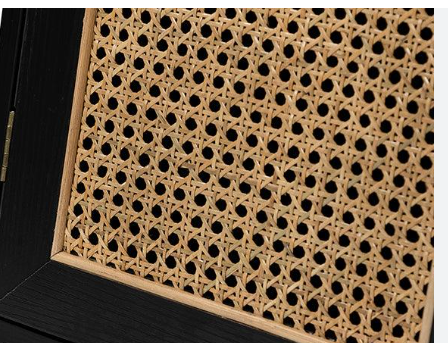
An ideal material for a variety of uses
Rattan cane webbing exemplifies sustainability and eco-friendliness due to its origin from a renewable resource. Obtained through harvesting rattan cane, the outer bark is carefully stripped away to expose the inner core, which is then fashioned into strips. These strips are skillfully woven together to form the sturdy and durable rattan cane webbing. Its remarkable strength, flexibility, and resilience make it a versatile material suitable for a wide range of applications.

Premium Rattan Cane Webbing
Transform your furniture with the addition of our natural Rattan Cane Webbing, for a renewed style. Our unbleached cane is lightweight and easily adaptable. While it can effortlessly retain a neutral hue, you also have the option to personalize it through staining or painting.
Share






Why Rattan?
One of the most popular trends in furniture upcycling is the use of rattan. Rattan has exploded in the world of interiors and doesn’t show any sign of exiting any time soon. It works with so many interior styles from Boho to MCM to minimalist. Rattan is so easy to work with and you can use it to create some amazing pieces for a fraction of the cost of retail.
Rattan: Vietnam's Sustainable Treasure

Rattan Facts
- The thorns on rattan plants are sharp and can easily cut through clothes and skin.
- Rattan plants are like vines, they grow up other plants to reach the sunlight.
- Some rattan plants grow so big that they can break the tree they are climbing on.
- The searching, sprawling growth habit of rattan plants allows them to reach incredible lengths.
- Some species of rattan have been reported to have stems that are over 500 feet long!

Benefits of Rattan
Rattan webbing is a versatile and sustainable material that is becoming increasingly popular for upcycling furniture. It is made from the natural fibers of the rattan plant, which is a fast-growing and renewable resource. Rattan webbing is strong, durable, and flexible, making it ideal for a variety of applications.
Preparation for use
Open the rattan roll and soak it in warm water for 15 to 30 minutes. If you don't have a large container a tub will do. Lay it flat on a towel and pat it dry.
Once it is dry you can begin cutting it and working with it as needed. It will be much more pliable and easier to work with.




-
-

Sustainable
-

Environment Friendly
-

Durable
-







